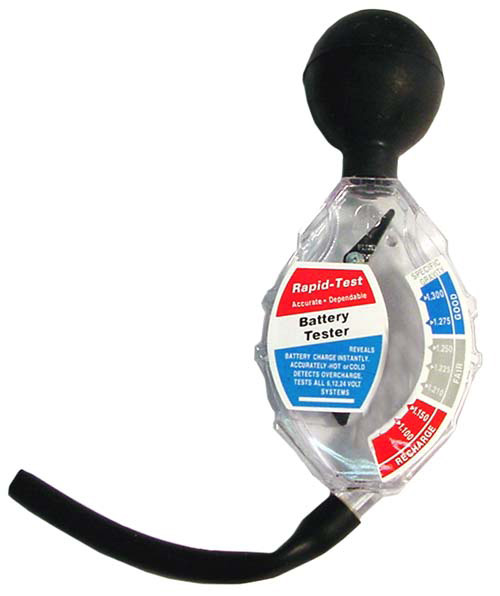Working with Floor Equipment Batteries
- Home
- Safety Guidelines
- Working with Batteries
- Advanced Battery Tips
Wet Battery Tips

- #1 tip: Keep batteries fully charged up.
- Distilled water kept at proper levels is the best way to maintain your battery life. Tap water has minerals that will short the plates and shorten your battery life.
- Water below the plates kills that portion of the plates. If your batteries run low on water and cover only 75% of the plates, you have lost 25% of your battery life.
- Fill low batteries to just above the plates, charge, and then top off to 1/2 inch from the top. Do not overfill.
- Battery efficiency decreases with falling temperatures.
- Bad bearings on drive or brush motors put a heavy amp draw on your batteries.
- A fast charge cannot fully recharge a battery; follow up with a slow charge for 3 to 4 hours.
- A hot battery charges (and overcharges) faster than a cold one.
- Battery swelling is usually caused by overcharging.
- All batteries have a normal discharge rate that increases with temperature.
- Store batteries in a cool location to minimize self discharging.
- An old battery myth - a battery on a concrete floor discharges very rapidly. False: It will run down just as fast on any other surface.
- A fully charged battery freezes at -85° F (50% charge at -15°F and 25% charge at +5°F).
- A battery left in a discharged state will "sulfate" and lose capacity. Keep your battery fully charged - do not leave it in a discharged state. Lead-acid batteries do not have a memory.
- Today's smart chargers do not over charge. Plug your machine in to the charger after each use.
Gravity Test Your Batteries
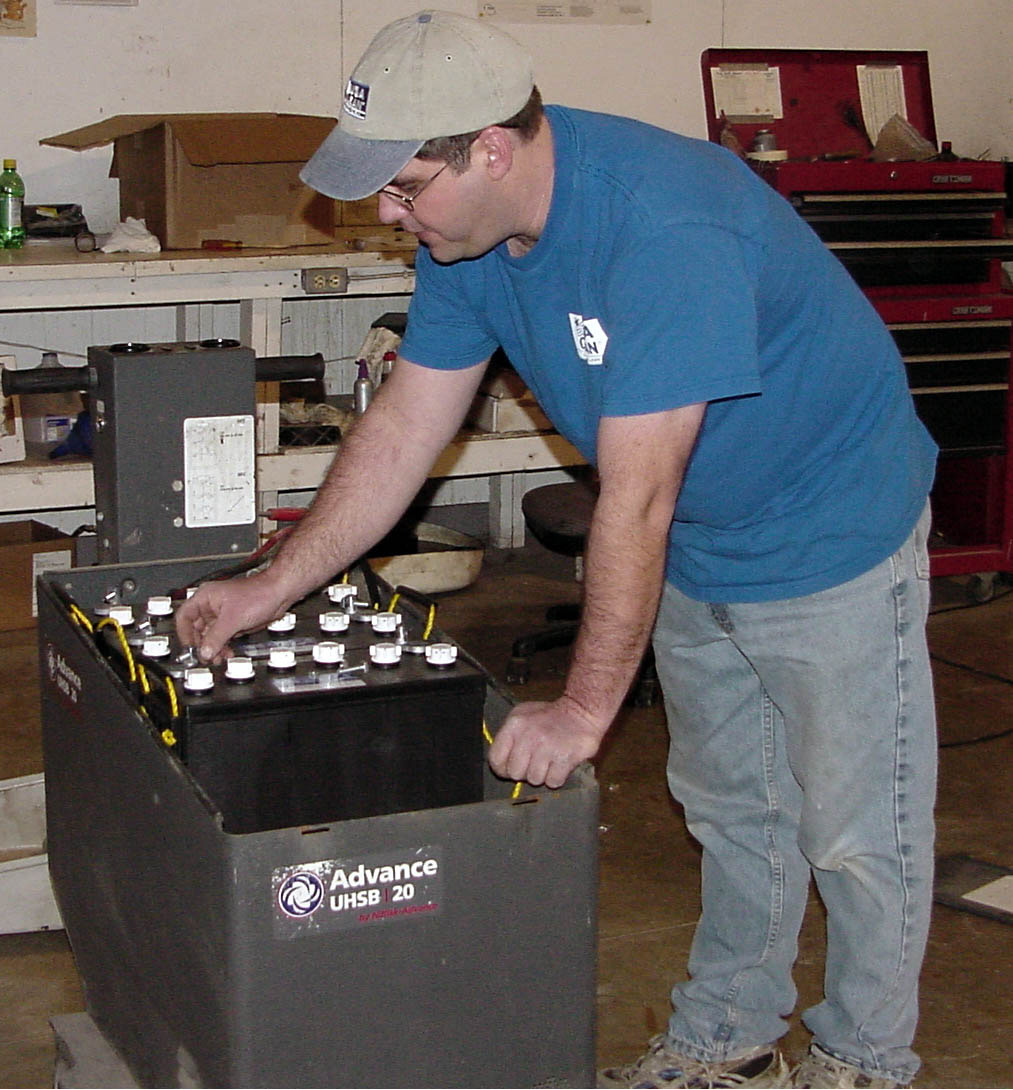
Fully charge your batteries and test them with a hydrometer. If one cell is bad, then the battery is bad. One bad battery will put an excessive load on remaining batteries. If you just added water (distilled only), then you will need to run your batteries through a couple of charges to get an accurate reading.
Wet Battery Failure
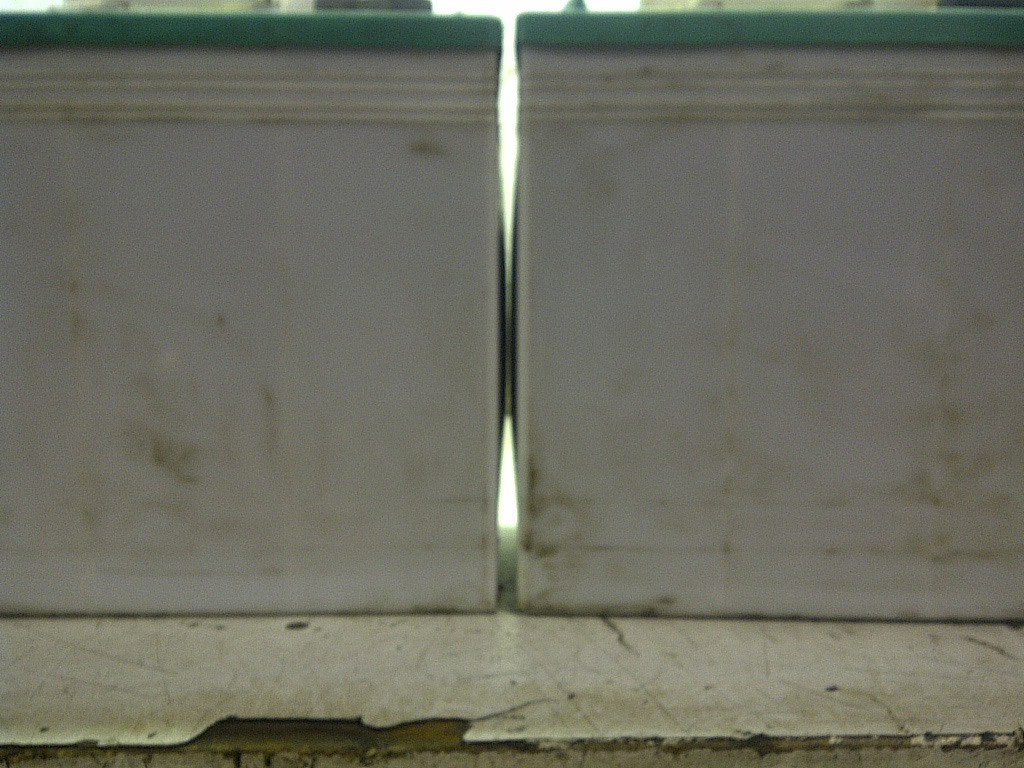
1. Battery case is swollen
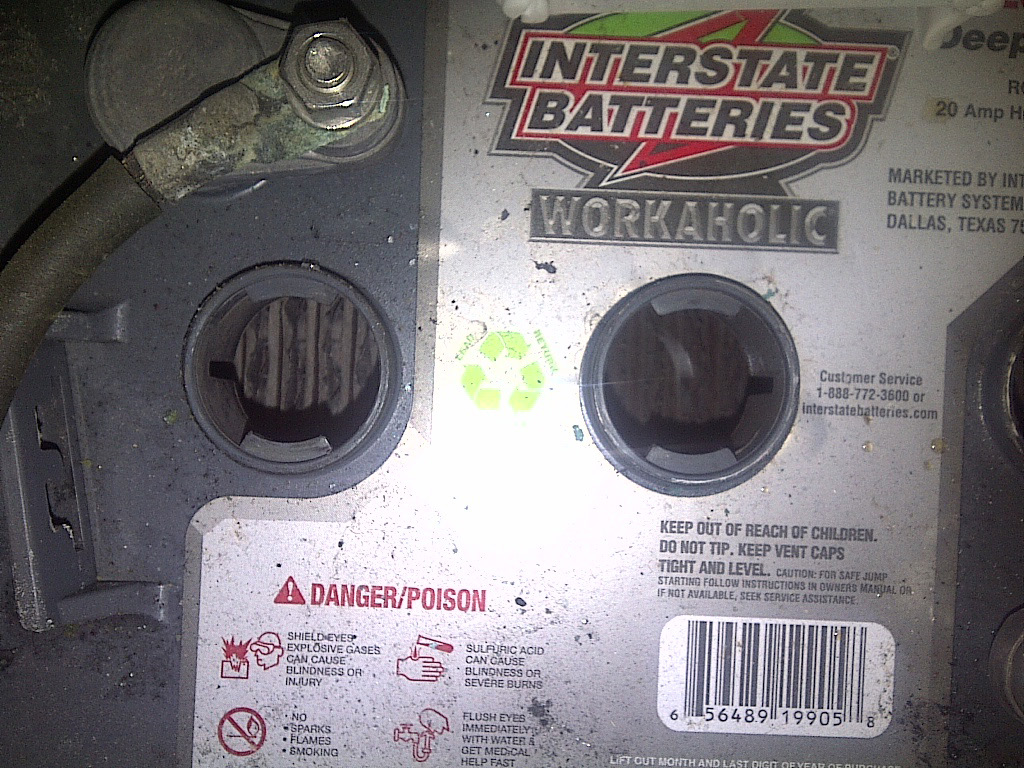
2. Batteries dry or low on water

3. Corroded terminals
Most Common Causes of Wet Battery Failure
Top 2 Causes:
- Allowing batteries to remain in a discharged state
- Overcharging
Other Causes:
- Loss of electrolyte due to heat or overcharging
- Undercharging with voltages less than 2.3V/cell
- Vibration
- Using tap water
Other Signs or Causes of Wet Batteries Going Bad
- Fumes coming from cells - sulfur smell (rotten egg)
- Batteries have sat unused for several months
- Batteries over 12 months old
- Electrical components do not perform as well
- Batteries not holding a charge/Low runtime - the only conclusive proof
Runtime Issues
How Long Should A Battery Auto Scrubber Run
Numbers below represent optimal runtime. Batteries may be bad if they achieve less than 60% of listed time.
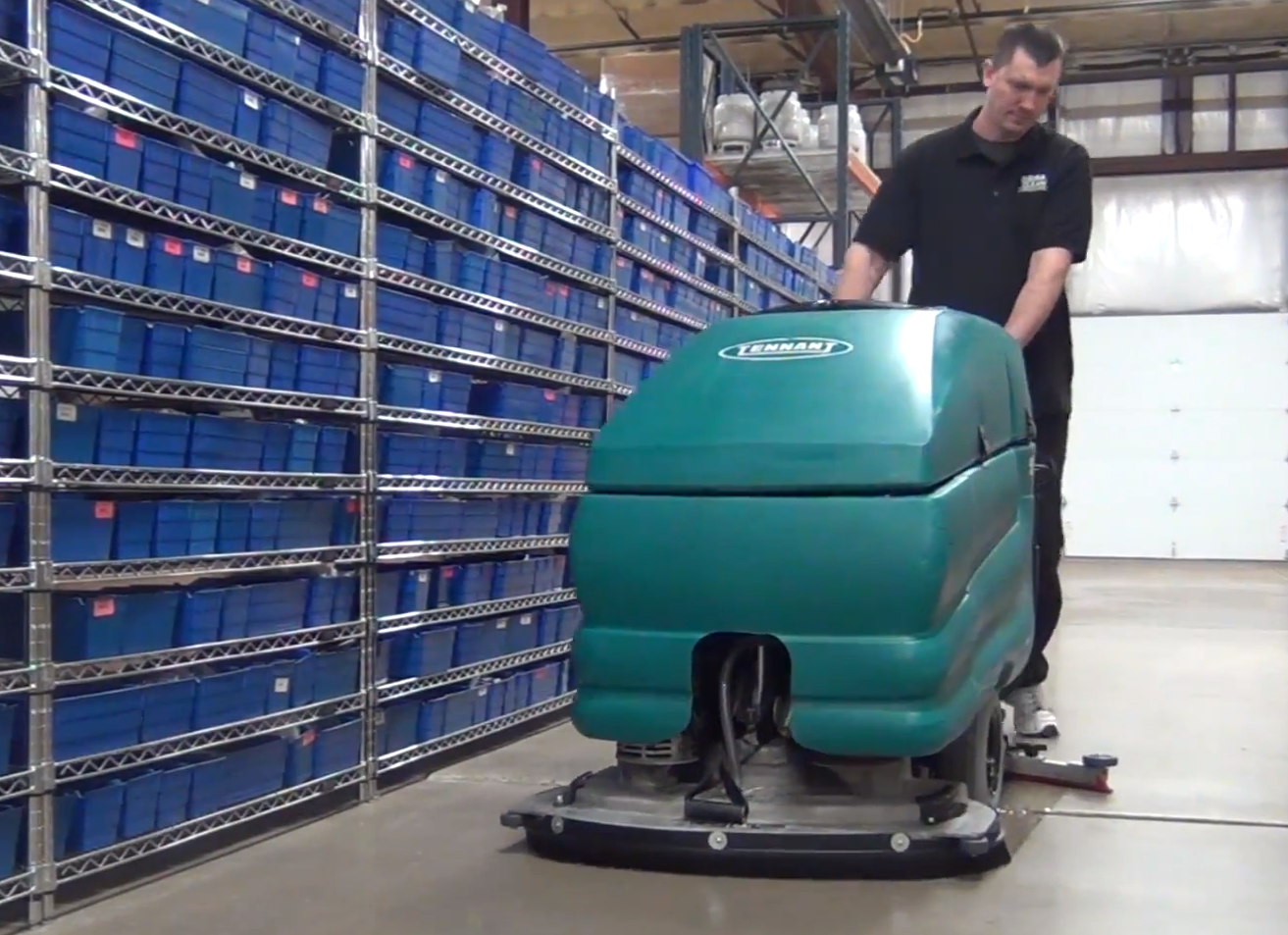
Wet Battery Runtime Chart
| Volts* | Amp Hour | Vac Motor (25amp Draw) | Scrubbing (50amp Draw) | Stripping (75amp Draw) |
|---|---|---|---|---|
| 12 | 195 | 6h 15m | 2h 41m | 1h 40m |
| 6 | 195 | 6h 15m | 2h 41m | 1h 40m |
| 6 | 250 | 9h 0m | 4h 0m | 2h 30m |
| 6 | 275 | 10h 0m | 4h 28m | 2h 48m |
| 6 | 305 | 11h 15m | 4h 45m | 2h 55m |
| 6 | 335 | 12h 27m | 5h 29m | 3h 23m |
| 6 | 412 | 14h 26m | 6h 19m | 3h 56m |
Important Note:
Scrubbing amp draw figures were measured in our service department measuring between 47amps and 49amps with around 18amps being the vacuum motor. Vacuum motors run at higher amps freewheeling and run at the lowest amps under the heaviest load.
Batteries hooked in a series (plus to minus on the cables) multiplies the volts not the amps and this does not change the runtime. If all batteries were hooked in parallel the amps would be multiplied and the volts would stay the same giving more runtime.
DO NOT TRY HOOKING YOUR BATTERY PACK IN PARALLEL because your scrubber will not run on 6 volts or 12 volts.

